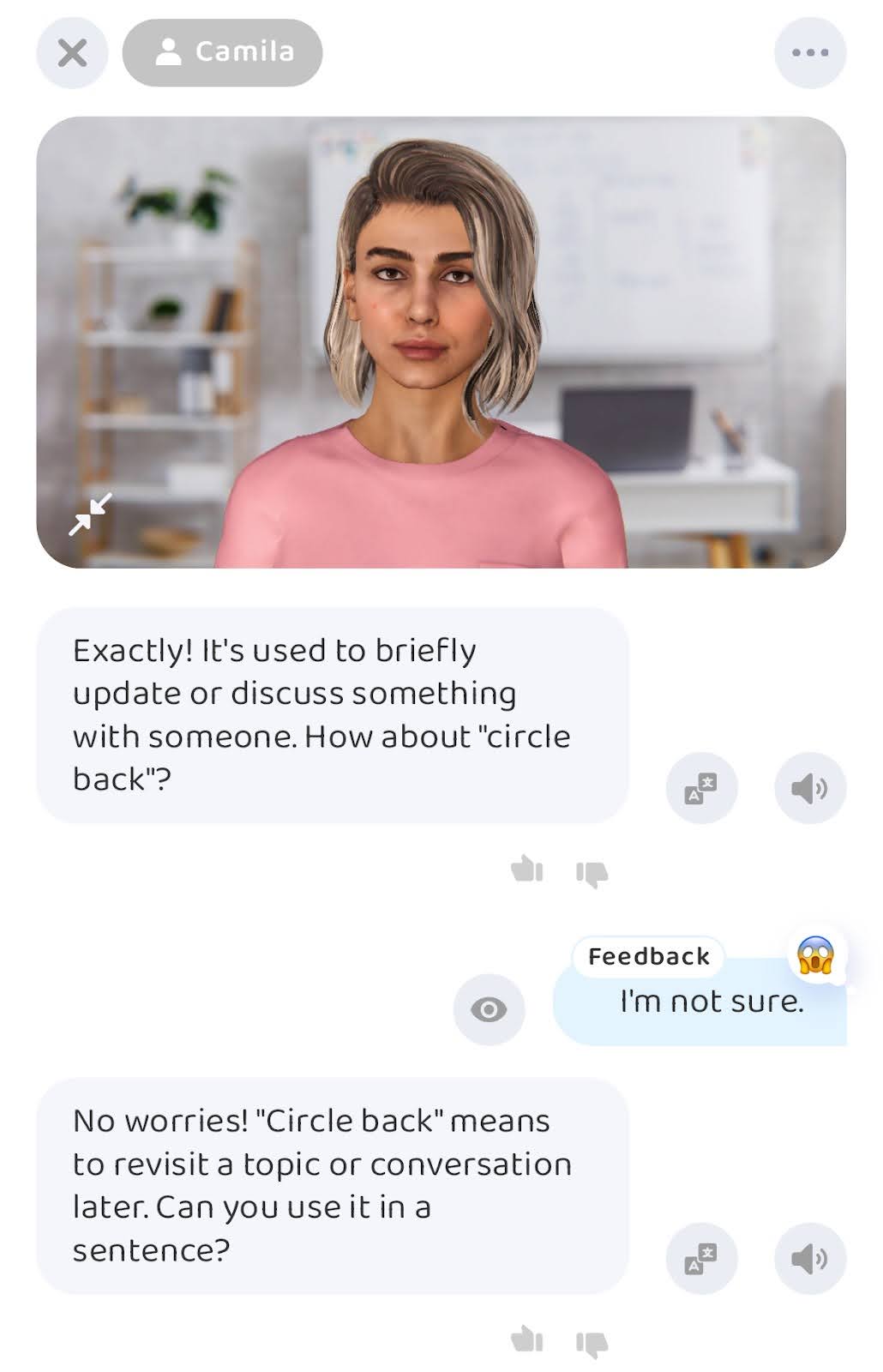Welcome, #1 employee! I’m Camilla! Are you feeling confused by phrases like “circle back” and “low-hanging fruit”? Business slang can feel like a secret language that everyone but you seems to understand. But once you learn these phrases, you’ll sound more confident and fit right into professional conversations. Today, I’m breaking down the most common workplace slang, what it means, and how to use it. Let’s get started!
Why Workplace Jargon Exists (and Why It’s So Popular)
Workplace jargon often feels like its own secret language, and for good reason—it serves specific purposes that help teams communicate more efficiently. Let’s break down why these English phrases are so common in the workplace and why they’re useful (even if they can be confusing at first).
1. It Saves Time
Many jargon phrases condense complex ideas into short, snappy expressions. Instead of explaining everything in detail, professionals use phrases to get straight to the point.
- Instead of saying, “Let’s revisit this topic later and discuss it further,” you’d say, “Let’s circle back.”
Think of jargon as verbal shortcuts—they’re faster, but only when everyone understands them!
2. It’s a Global Influence
Thanks to international businesses and remote work, English workplace slang is used around the world. If you’re working with colleagues from different countries, understanding common jargon can help you communicate better.
- Terms like “synergy” or “touch base” are widely recognized and used in global workspaces.
3. It Builds Team Culture
Shared language fosters a sense of belonging. When you use the same phrases as your coworkers, it can make you feel more like part of the team.
- Saying, “Let’s focus on low-hanging fruit,” shows you’re aligned with your team’s goals and priorities.
Observe the phrases your team uses and try to incorporate them naturally into your conversations.
4. It Makes You Sound Professional
Using workplace slang correctly can boost your confidence and help you sound like you know the ropes, especially in meetings or emails.
- “This strategy will really move the needle,” makes you sound results-oriented and goal-focused.
How to Adapt to Workplace Jargon
- Listen first: Pay attention to how others use phrases before trying them yourself.
- Practice with context: Learn when and where to use jargon—casual conversations vs. formal presentations.
- Ask for clarification: If you’re unsure about a phrase, it’s okay to ask a colleague or look it up.
The Ultimate Workplace Slang Glossary
Workplace slang can feel overwhelming, but once you start using it, you’ll notice how much it simplifies communication. Below, I’ve expanded our cheat sheet with even more common phrases, their meanings, and examples to help you master them in context. Let’s get you talking like a real pro!
| Phrase | Meaning | Example |
| Circle back | Return to a topic later | “We’ll circle back to this after reviewing the client feedback.” |
| Low-hanging fruit | Easy-to-achieve goals | “Let’s focus on the low-hanging fruit before tackling the bigger challenges.” |
| Take it offline | Discuss a topic privately or later | “Good point—let’s take it offline to avoid derailing the meeting.” |
| Touch base | Check in or follow up | “Can we touch base tomorrow about the proposal?” |
| Move the needle | Make significant progress | “The new marketing campaign should really move the needle for our sales.” |
| Bandwidth | Time or resources available | “I’d love to help, but I don’t have the bandwidth right now.” |
| Run it up the flagpole | Test an idea to see the reaction | “Before we commit, let’s run it up the flagpole and get feedback from leadership.” |
| Deep dive | Explore something in detail | “Let’s do a deep dive into the analytics before making a decision.” |
| Boil the ocean | Overcomplicate a task unnecessarily | “We’re trying to solve too much at once—don’t boil the ocean.” |
| Close the loop | Ensure everything is finalized or resolved | “Let’s close the loop on this project before we move on to the next one.” |
| Blue sky thinking | Creative, out-of-the-box ideas | “It’s time for some blue sky thinking to solve this problem.” |
| Align | Ensure everyone is on the same page | “Let’s align on our priorities for the next quarter.” |
| Circle the wagons | Protect or support a team or idea | “Let’s circle the wagons to prepare for the client’s feedback session.” |
| Value add | Something that adds extra value | “This feature is a real value add for our customers.” |
How to Use These Phrases in Context

Let’s look at how you might encounter or use these phrases in the workplace:
In a meeting:
- “Before we move on, let’s close the loop on our deliverables for this week.”
- Translation: Finish discussing the tasks before starting something new.
In an email:
- “Can we touch base on the presentation tomorrow? I’d like to circle back to a few key points.”
- Translation: Let’s meet tomorrow to discuss and revisit important parts of the presentation.
In brainstorming sessions:
- “Bring your blue sky thinking—we need fresh ideas for the new campaign.”
- Translation: Be creative and think outside the box.
Start with phrases you hear most often and practice using them in similar contexts. Don’t feel pressured to use them all at once—master one or two at a time!
Pro Tips for Navigating Workplace Jargon
Workplace jargon can feel like an insider’s game, but with the right strategies, you’ll not only understand it but use it effectively. Here are my top tips for navigating business slang like a pro, complete with examples to guide you.
1. Learn the Context
Not all workplace slang fits every situation. Some phrases are perfect for casual team chats, while others suit formal emails or presentations.
Casual team chat:
- “Let’s circle back to this after lunch.”
Formal meeting:
- “I’d like to revisit this point in our next meeting.”
💡 Camilla’s Tip: Pay attention to how and where your colleagues use slang to understand its proper context.
2. Keep It Simple
You don’t need to pack your sentences with jargon to sound professional. Overusing slang can confuse others or make you seem insincere.
Overdone:
- “Let’s align on the low-hanging fruit and move the needle while leveraging synergy.”
Simple and clear:
- “Let’s focus on the easiest tasks first and work together to make progress.”
3. Use It Naturally in Conversations
Practice using phrases in low-pressure settings like team check-ins or brainstorming sessions. Start with the phrases you’re most comfortable with, and build from there.
- Instead of saying, “I’m too busy,” try, “I don’t have the bandwidth right now.”
4. Ask for Clarification
If you don’t understand a phrase, don’t hesitate to ask. It’s better to clarify than to pretend you know—it shows your willingness to learn.
- “I heard someone mention ‘boil the ocean.’ Can you explain what that means in this context?”
5. Observe First, Speak Second
When you’re new to workplace slang, listen carefully to how others use it before jumping in. This way, you can pick up the tone, context, and frequency of its use.
Talking the Talk
Ready to master workplace lingo? Practice with me as your AI English tutor—I’ll guide you through real-life scenarios so you can use business slang naturally and effectively. Hop into the Praktika English learning app, and let’s circle back to perfecting your professional English!

From Camilla
Camilla is a confident and approachable English tutor with a passion for helping students prepare for academic and professional success. A Sydney University graduate and education abroad consultant, she specializes in guiding students through language exams, university applications, and adapting to life in English-speaking environments. Whether you’re navigating academic essays or campus conversations, Camilla’s focused yet friendly approach makes learning English an enchanting experience.
